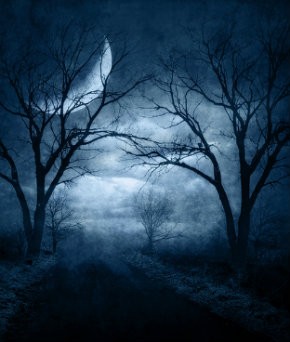Into the darkness
Halloween draws near. The holiday began in Christian tradition as a time to ponder death and the recently departed. Though we do not always take it so seriously today, Halloween’s tradition of ghouls, witches and other shadowy characters makes it as good a time as any to think on the reality of evil, sin and death that besets us.
For Christians, the darkness of Halloween or any other sort of darkness is never the final and ultimate word—that is reserved for resurrection light and the eventual triumph of Christ’s grace in the renewal of all creation. But for Christians, as for all sufferers, darkness is real. The twin dangers of our age are sentimentally denying darkness or slipping into an utterly godless nihilism, being consumed by darkness and nothing but darkness. For people of faith, the danger of sentimentally denying, avoiding or rushing away from darkness is the most pressing of these two temptations.
Few modern Christian artists were more acutely aware of the pitfalls of sentimentality than Flannery O’Connor. She complained, “Today’s reader, if he believes in grace at all, sees it as something which can be separated from nature and served to him raw as Instant Uplift.” This is cheapened and sentimentalized grace, grace removed from and denying all darkness and struggle in life.





